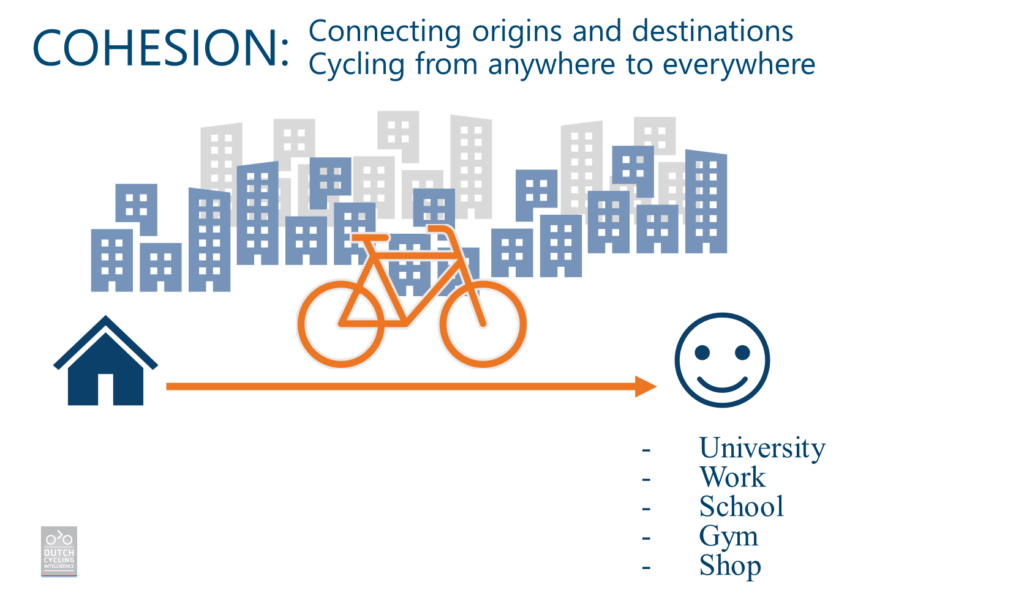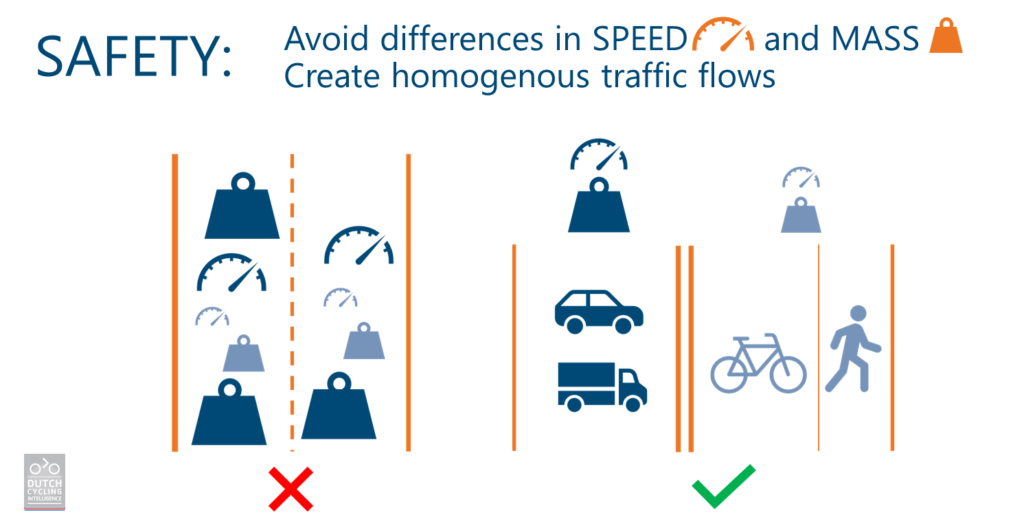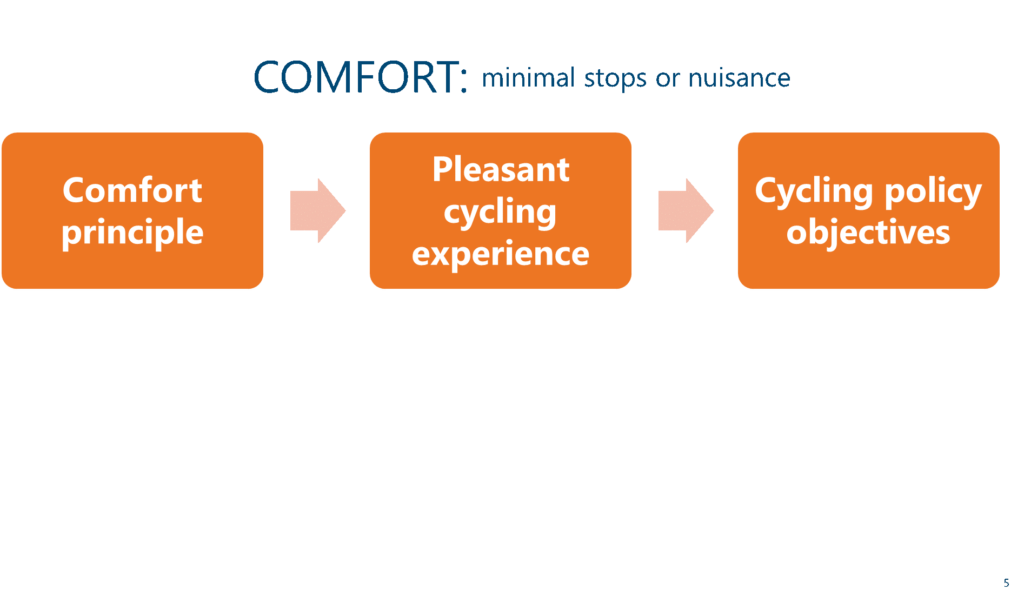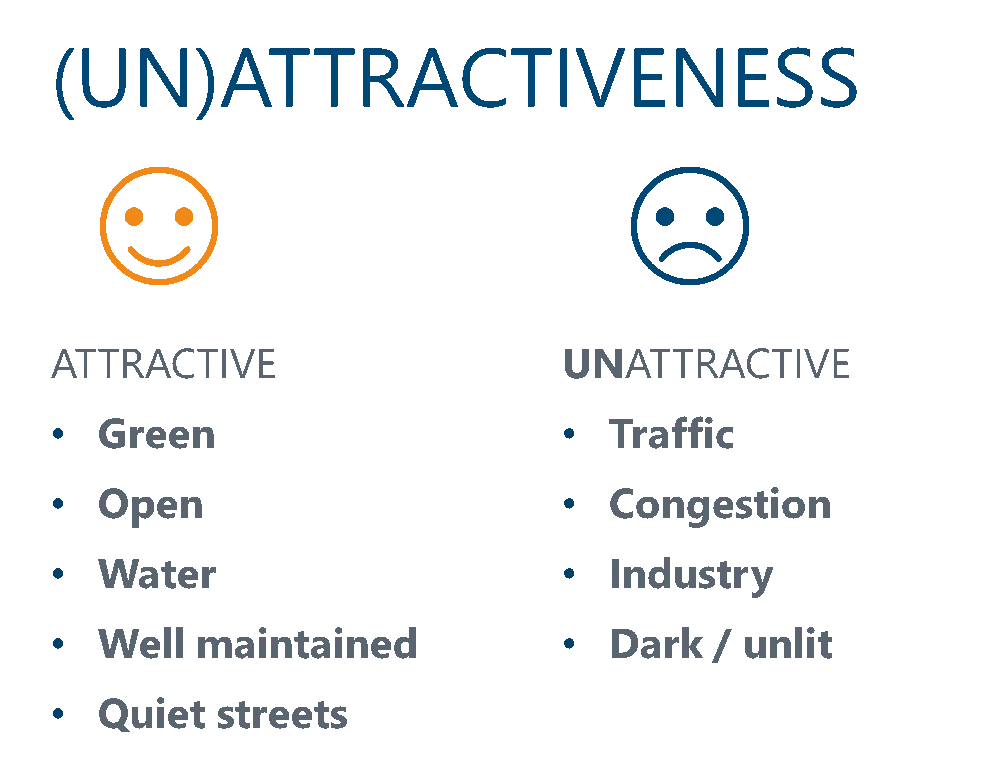The famous Dutch CROW Bike Design Manual talks about 5 design principles for bicycle infrastructure: Cohesion, Directness, Safety, Comfort and Attractiveness. The key advantage of the design principles is the transferability. Whether you are in Europe, the America’s, Africa, Asia, Down Under or elsewhere. Whether you are a starting, climbing or champion cycling culture. These design principles apply to each situation! And applying the design principles leads to safe and successful bicycle infrastructure.
In this blog I will shortly introduce the each of them. The content is based on CROW’s “Design Manual for Bicycle Traffic (2016)”
Cohesion
If we want to promote the use of the bicycle as a means of transport, we need to make sure that cyclists are able to cycle from A to B. From anywhere to everywhere. That is why the design principle Cohesion is relevant.
Cohesion is about the possibility of getting somewhere by bicycle, whether it is a single-mode trip by bicycle or a multi-modal trip that involves using a bicycle to access public transport hubs. Cycle friendly infrastructure should “form a cohesive whole and link all origins and destinations that cyclists may have”.
Imagine a short trip from home to friends elsewhere in town. Or taking your bike to ride to your office, to school, to the metro or train station or for shopping. On each trip, your route will take you from your residential street to, bicycle paths, a cycling street and busier roads. You might be cycling on separated cycle paths or in mixed traffic. Cohesion is about connecting all these elements and ensuring that a door-to-door trip is possible by using your bicycle.
Of course, a network is not built in one day. Neither was Rome. The key lesson here: start with a link, plan for a network!
Directness
Directness means offering the cyclist as direct a route as possible with detours kept to a minimum. Why is this principle relevant? Because the bicycle is human powered and we do not want to waste energy on detours. And because we want fast connections and minimise delays as much as possible in order to make the bicycle a competitive transport mode.
Planning for directness is about distance and time, … so planning short and fast routes. Shall we take a closer look on how this works? Short routes between origins and destinations can be created at the network level, by providing a connected and sufficiently dense bicycle network. Reducing journey time is possible by creating routes without delays. For example by using measures such as one-way streets for cars that allow contra flow for cyclists. And by creating routes that may exclusively be used by cyclists and pedestrians.
Planners who apply this principle may reduce cyclists’ average commuting time and as such promoting bicycle use. Especially, in congested urban areas the bicycle proves a competitive alternative to the car in terms of journey time.
Safety
When we talk about safety in this context we refer to road safety but also to personal health: reducing stress and minimising the exposure to pollutants and noise.
Infrastructure – including bicycle infrastructure – should guarantee the safety of both cyclists, as other road users. For bicycle infrastructure to adhere to the safety design principle, it should strive to avoid differences in speed and mass as much as possible.
At street design level we want to segregate different vehicle types by providing solitary cycle lanes or using physical separators. At the intersection level, grade solutions such as tunnels and bridges can be used. Especially for roads with high volumes of traffic or speed limits or high speed limits.
The safety principle is also relevant to take into account at network level. Let’s see how this works. The key is planning links in such way that exposure, accident risks, emissions, noise and stress are avoided. Often links are planned next to busy arterial roads. However, quieter streets – a block up or down – are much more interesting if we look at our safety ambitions. On those streets traffic volumes are lower and often more space and spare capacity is available to realise a safe bicycle infrastructure design.
Comfort
We must realise that it is human instinct to seek comfort. Even so, engineers and infrastructure developers may not always consider this essential design principle as carefully as they should.
Strategic objectives to stimulate bicycle usage are becoming increasingly more commonplace. As this principle plays such a crucial role in creating a more pleasant cycling experience, it should not be overlooked.
Comfortable bicycle infrastructure should ensure that cyclists experience minimal stops or nuisance. For example: vibrations, extra exertion due to height difference, trouble from other traffic and delays.
Again, an important solution here is to plan links of the bicycle network on quieter streets in order to avoid noise and exhaust fumes. On street level creating smooth pavement is an important solution. Furthermore – as cycling requires physical effort – you would want to avoid unnecessary extra effort by having to take detours or having to make unnecessary stops. Network links should provide direct connections, avoid detours, and reduce bends
Attractiveness
A very personal one. One that is influenced by many elements. Some elements that are considered as attractive by the one are perceived as unattractive by others. Those elements could convince some to actually to choose the bicycle. And for others could be the reason not to. It is not surprising that elements of attractiveness might be difficult to grasp when planning for or promoting cycling.
Fortunately, there is evidence and practical guidance. Research shows that generally spoken cyclists find green, open spaces, water and aesthetic quality of the built environment attractive. Elements that are considered unattractive are congestion, exhaust fumes, subjective risk on accidents and personal safety.
So how could one apply this when planning at network level? Quite simple: if possible
- Plan links in lively or green areas.
- Avoid planning links in industrial, dark or deserted areas
- When this is not possible additional measures on street design should be considered such as lighting, or providing street furniture or street art, to make routes attractive.
More about the design principles?
Participate in our Dutch Bicycle Infrastructure Training 2025.





